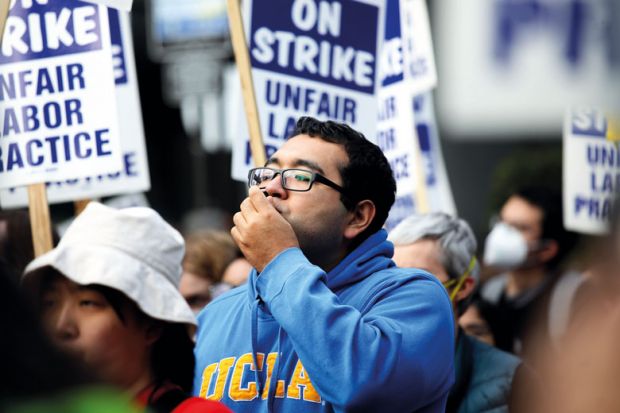The unprecedented teacher strike against the University of California system is giving US higher education one of its toughest-ever lessons in the downside of academia’s power to economically transform local communities.
The strike by graduate-student workers at the nation’s top-ranked set of public research institutions has moved into its fourth week, leaving the system’s 300,000 students struggling to complete classes before the end of the autumn semester.
The workers’ demands for pay increases are most directly tied to housing costs, which have shot higher in most of the cities where the University of California has its campuses because their economic and cultural successes have made the communities more desirable.
Yet while top research universities and their backers have long celebrated academia’s prodigious powers of urban renewal, the biggest-ever job action in US higher education is now leaving the institutions open to complaints that they have not devoted enough attention to protecting the people who make the transformations possible.
Examples of what critics see as a dangerous disconnect in priorities include the University of California, San Diego, which recently opened a 2,650-seat open-air performance venue. Shortly afterwards, it became the focus of protests by university workers, who questioned the campus’ investment in the centrally located $68 million (£56 million) facility when it is so pressed for student housing that it just opened a new apartment building for staff and faculty that’s more than an hour from campus and charges at least $2,100 a month for a small studio unit.
The system-wide strike has involved nearly 48,000 California workers, most of them graduate students in teaching and research roles. A survey by their union concluded that 92 per cent of the workers now spend more than 30 per cent of their salary on rent, making them “rent burdened” under federal definitions.
Experts saw the causes of the crisis as complex, including the generally high price of real estate throughout the US, driven by a decade of historically low interest rates and, more recently, a trend among large companies to buy up residential housing and offer them for lease at a profit.
“It’s really kind of a perfect storm for graduate students,” said Brian Fitzgerald, chief executive of the Business-Higher Education Forum, a coalition fostering partnerships between corporate chief executives and university presidents.
Some of the immediate pressure may ease, Dr Fitzgerald said, with the recent decline in US housing prices brought about by the federal government’s campaign to raise interest rates.
But beyond the short-term variations in interest rates, and the immediate need to resolve the strike in California, Dr Fitzgerald said, the overall moment may put pressure on universities in high-cost cities to take more aggressive steps to buy their own residential real estate to house their students and workers.
That need became evident as a major crisis even before the worker strike, when the University of California, Berkeley was nearly forced to abandon a third of its freshmen class this autumn because of a legal fight brought by some city residents angered by overcrowded conditions in student residences.
Some US universities – with prominent examples including George Washington University and Roger Williams University – already are buying up properties around them to help house their students and workers, Dr Fitzgerald said. That kind of effort may need to become much more commonplace, he said, especially among major research institutions that rely heavily on graduate students to teach their classes and conduct their research.
“If that graduate structure is going to survive,” he said, “universities have to be more nimble about meeting those real-life needs.”




